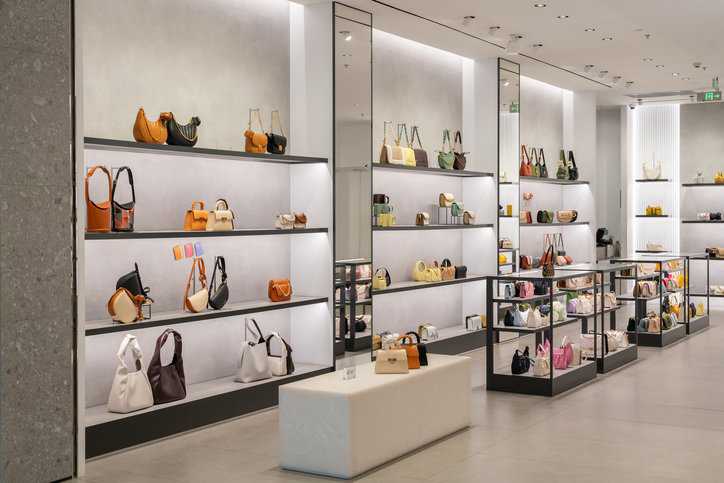Proper retail lighting can help customers navigate a store, guiding them to different sections and drawing attention to areas of interest. In fact, a study showed that well-placed retail store lighting can increase the average spend per customer. One retailer saw a 12% increase in sales after installing LED retail lighting, and another study found that effective retail lighting can enhance sales by up to 40%. Therefore, lighting design functions as a key part of a sales strategy. ANSI/IES RP-2-20— Recommended Practice: Lighting Retail Space provides a guide for lighting quality and energy efficiency in retail and merchandise lighting.
Retail Lighting in the Merchandising Process
The first step in the merchandising process is attracting the customer to the retail space and its merchandise. The quantity and quality of illumination, the impression it creates about the merchandise, and the effect it has on the retail area’s appearance (i.e., show window or store interior) are all factors in a successful sale. Buying decisions start when the customer is visually attracted. The actual purchase, however, is not accomplished until the customer can visually evaluate the attributes of the merchandise, such as color, texture and quality, and read pricing and other information labels.
Lighting at the point of sale is necessary to complete a transaction. It should enable the customer to make a final decision and easily locate the sales register. It should help sales personnel quickly and accurately record sales on the register, prepare paperwork, read prices, use credit card transaction tools, and wrap packages. Good lighting design will also help minimize returns by enabling customers to fully evaluate the merchandise at the point of sale and reduce disappointment with purchases.
What Is ANSI/IES RP-2?
ANSI/IES RP-2-20 provides criteria essential to lighting merchandise displays in a variety of retail applications. This American National Standard specifies that the lighting system should be designed to create a pleasant and secure environment for conducting business. New, more efficient light sources innovative luminaire designs, and updated controls equipment provide the designer with a vast array of considerations and tools that help promote brand identity while reducing operating costs and addressing energy and sustainability issues. The criteria and techniques presented in ANSI/IES RP-2-20 serve as a foundation for how to use these new tools.
The standard details that for optimum success in lighting retail spaces (or where specialized merchandise lighting is required), the services of a professional specializing in retail merchandise lighting design is recommended. Further, it maintains that ideally, this lighting professional should join the design team during the early stages of project development. ANSI/IES RP-2-20 is intended for designers with varying levels of experience in retail lighting design.
What Stores Does ANSI/IES RP-2-20 Apply to?
ANSI/IES RP-2-20 applies to the lighting in a variety of types of retail and merchandising stores:
- Warehouse/Factory Outlet: Deals in factory overstocks, discontinued goods, and irregular items.
- Mass Merchandiser: Sells brand name and house brand merchandise in high volume at discounted prices.
- Department Store: Sells brand name and house-brand merchandise with added service to customers.
- Fashion Designer/Specialty Shop: Markets fashion merchandise, often by famous-name designers.
How to Design Lighting for Retail Environments
A designer needs to create the desired visual impression prior in order to effectively design lighting for retail environments. Thus, designing lighting for retail environments requires attention to traffic patterns as well as the quality, quantity, and effectiveness of lighting in rendering the color. Designers should know how various beam distribution patterns give the merchandise form, texture, and color. Furthermore, designing lighting also requires a good understanding of how light will behave in the space and on the merchandise. In other words, designers should understand how merchandise will reflect, refract, transmit, or absorb light in its space.
For example, lighting in a jewelry store, department store, and a supermarket vary. These diverse needs translate into very different lighting systems. The jewelry store demands elegance and sparkle for careful appraisal of fine diamonds with good casework illumination without annoying glare for the shopper. Department stores aim to create a spotless and rewarding shopping experience via utilizing a variety of luminaire types for visual interest, ambient lighting, and highly concentrated accent lighting, while the market requires arrangement and clarity for fast brand-name selection through proper placement of luminaires, where glare and veiling reflections are minimized.
ANSI/IES RP-2-20— Recommended Practice: Lighting Retail Space is available on the ANSI Webstore.
